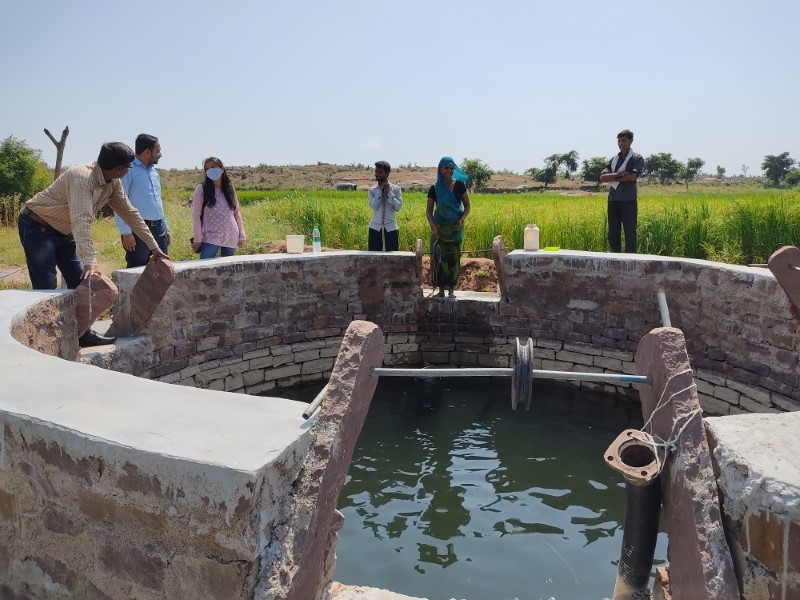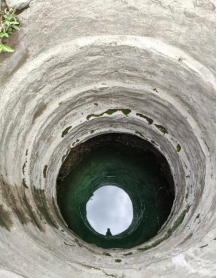The discourse on sustainable water management in the Indian context is incomplete without the mention of groundwater.
Historically, our country and its population relied on surface water sources (rivers, ponds, lakes) to meet its water requirements. It is well known that India’s civilization came up and flourished on the banks of rivers.
However, India today is a groundwater-dependent nation.

Photo credit: opportunities.alumdev.columbia.edu
One can trace early research and development of groundwater extraction systems to the 1920s, with the Geological Survey of India engaged in providing advice on groundwater supply for urban areas, irrigation, industries, and military infrastructure. One of the major drivers for this change was groundwater was perceived as a safe source of water as compared to surface water.
Over the past 100 years, India has used and overused its groundwater resources. Today, India withdraws about 273 cubic kilometers (km3) of groundwater per annum, which is more than the combined annual groundwater usage by the US and China. What is alarming is that our country uses around 60% of the groundwater that is recharged annually. With an ever-increasing population, the need for expanding irrigation for agriculture, meeting the water requirement of our cities, industries, and rural areas, the future of India’s most dependent water resources –GROUNDWATER, looks all but challenging.

While lots of conversations have been around access to groundwater, what is equally important is deteriorating groundwater quality. Groundwater contamination, both from geogenic and anthropogenic sources, is reported from various parts of the country. Fluoride contamination in groundwater has been reported from 20 states while arsenic contamination has been reported across seven states. Besides these two major contaminants, high salinity, nitrates and iron (which are not major health hazards as arsenic and fluoride) have been reported from various parts of the country.
Anthropogenic contamination coming from industrial effluents, untreated sewage, and leaching from landfills have increased the toxicity of groundwater adding new contaminants, including heavy metals in our groundwater sources.
Planning and management for securing our groundwater sources is the need of the hour. Securing groundwater equals safeguarding India’s water future.
Water harvesting and artificial groundwater recharge have the greatest potential to augment aquifers in addition to having a positive impact on the local ecosystem and generating social and environmental benefits. However, we should also be mindful of all possible impacts of groundwater recharge on downstream users and the ecosystem before embarking on large-scale groundwater recharge programs.
Discussing increasing the groundwater availability through water harvesting and recharge, we should lay equal emphasis on improving the water use efficiency for all water using sectors. Efficiency in water use will lower the dependence on freshwater extraction, including groundwater, which is currently meeting 85% and 60% of the domestic water and agriculture water requirement respectively.
For a country as large as India, we need an extensive data collection network for measuring groundwater levels and quality. The Central Ground Water Board monitors groundwater levels and quality in the country through a network of 15,640 observation wells. To get a more real picture of the status of water resources that reflects the changes on water availability and quality as a function of human use and natural changes, we should increase the number of observation wells and water quality monitoring stations.
We must be mindful of the close interrelation of ground and surface water when planning for freshwater conservation. The existing knowledge on surface and groundwater interaction across river basins in India is mostly location specific. Greater research is required to expand the understanding on this aspect. While there is an ongoing national program for mapping groundwater aquifers, it will be useful to integrate aspects of groundwater-surface water interaction areas to enable practitioners and planners to make more informed decisions.
While it is important to undertake measures for augmenting groundwater availability for use and increasing water use efficiency, the aspect of improving groundwater governance go hand in hand to support effective conservation and management of this important resource.
Groundwater governance is about involving individuals and institutions in decision making backed by the understanding of the area’s hydro-geology. One certainly cannot ignore the local wisdom of communities across different regions of the vast nation that has been the guiding principles for effective water management across several centuries.
An effective and sustainable groundwater management road map will need integration of different disciplines with citizen science. Our approach towards groundwater resources should certainly be that of a fixed deposit that needs to be protected for securing our water future.
An effective and sustainable groundwater management roadmap will need integration of different disciplines with citizen science. Our approach towards groundwater resources should certainly be that of a fixed deposit that needs to be protected for securing our water future.
Vardhman Envirotech
India’s Passionate rainwater company
This article is published on: The Times of India, 22 March, 2022
We would like to spread this for the benefit of fellow Indians.
